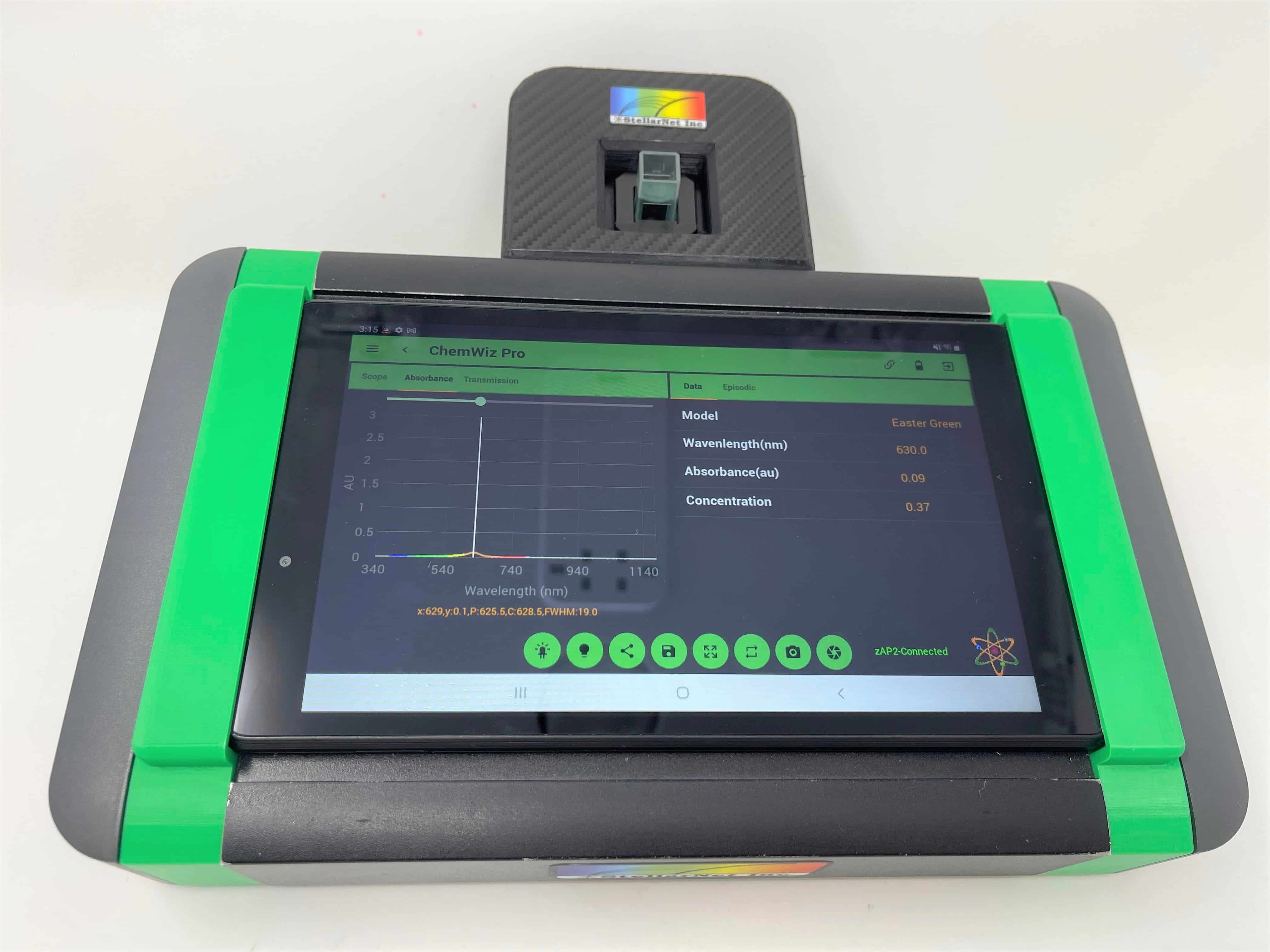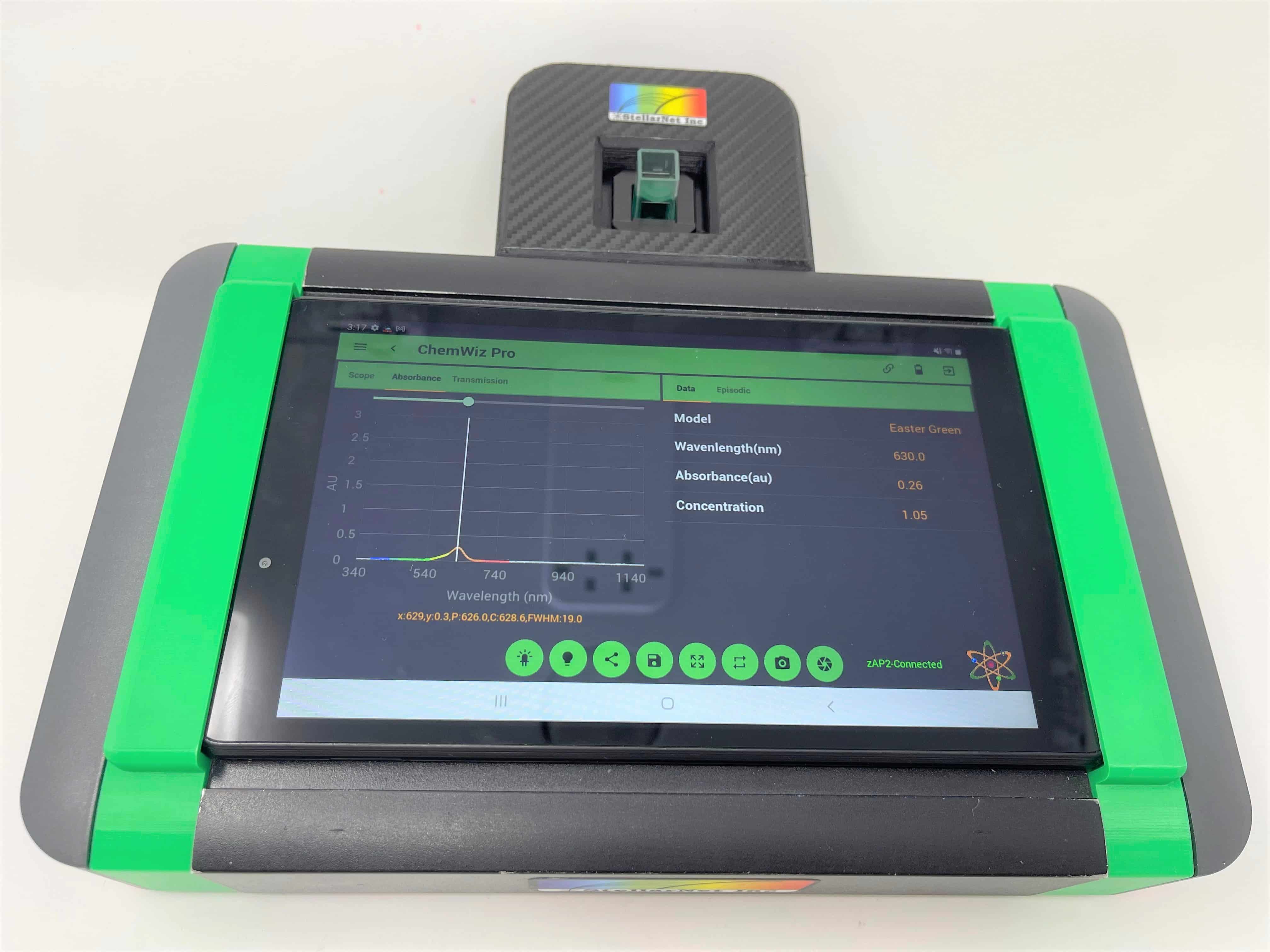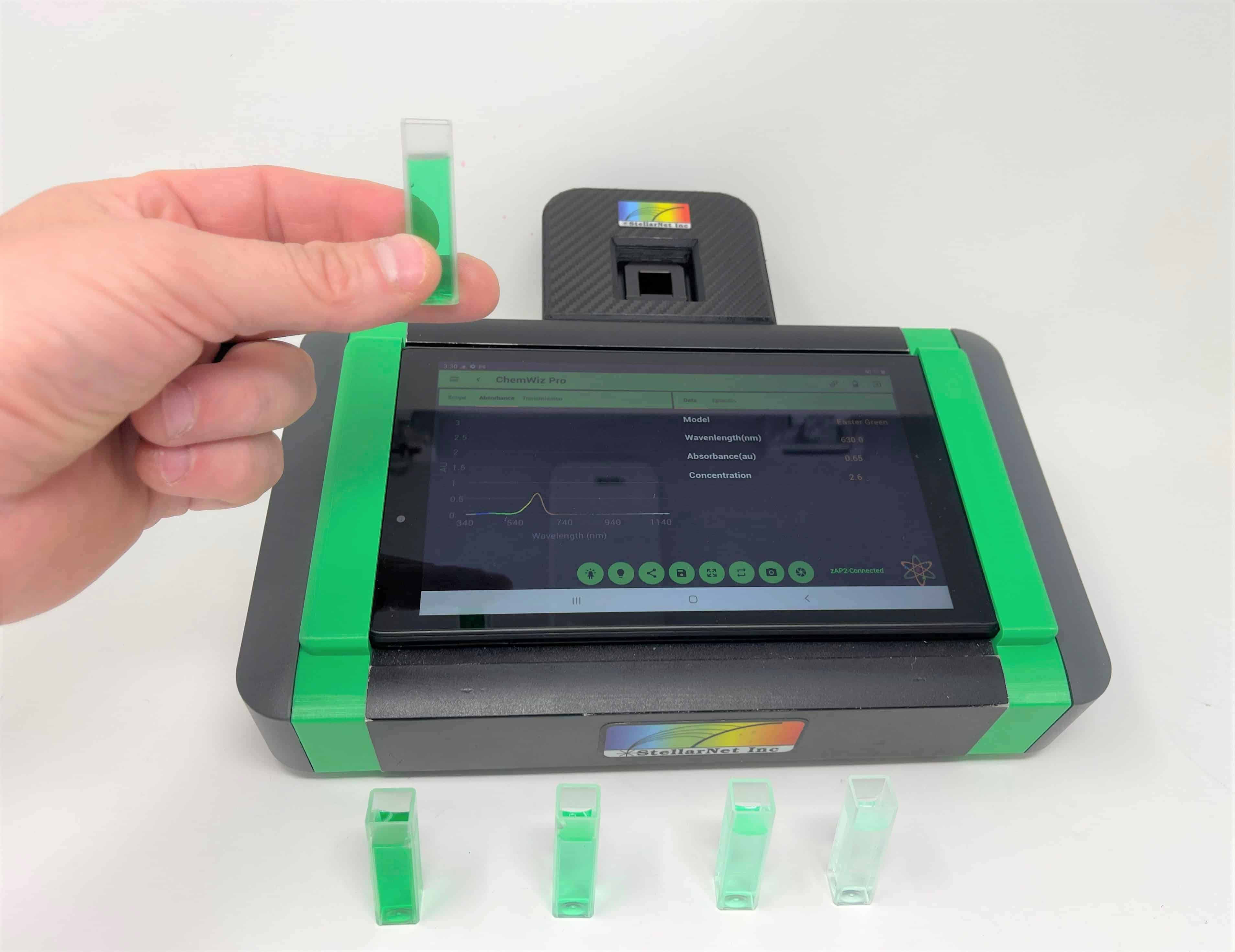Eggs represent new life, fertility, and rebirth and for these reasons have been absorbed into the springtime Easter celebration. This Easter season, the StellarNet team thinks it is an eggcellent time to introduce the newest addition to the handheld spectrophotometer line – the ChemWiz! In this holiday application note, we demonstrate how to quickly make a chemical absorption method of green Easter egg color dye using Beer’s Law and use that same model to predict concentration and provide color consistency of your Easter eggs. Now, all your Easter eggs can be equally vibrant! The ChemWiz can also be used for quality control and field analysis of both liquid and solid samples from food and beverage to water analysis. The system comes with the new magnetic snap-on CUV-HH cuvette holder for chemical absorbance. Additionally, a dip probe can be used for in-situ or large batch measurements. Learn more about the ChemWiz
Creating a Green Easter Egg Dye Method
The first step in creating any analytical chemistry method is to determine your units of measure and how you plan to make your calibration standards. Some chemical absorbance tests kits come with all this work already done for you. But this Easter we have decided to make our own calibration model measuring green Easter egg dye. We have decided to use the unit of measure “drops of dye/liter” as our units and we simply will make 4 standard samples 1,2,3, and 4 drops of dye per liter of water.
Measure the Absorbance of your Standard Samples
Once your standard samples have been created, simply pipette them into a cuvette and get ready to measure chemical absorbance. Similar to typical bench-top spectrophotometers that you might have used in undergrad, you will need to take a dark and blank reference scan using pure water before you begin. In the ChemWiz-Pro software, you can do this by clicking the light and dark light bulb icons. Once complete, you can then load your first standard sample into the CUV-HH magnetic snap-on cuvette holder for the ChemWiz. See the absorbance values of all 4 standard references below.
Create and Load your Calibration Method
Beer’s law states that absorbance is proportional to the concentration and pathlength of an absorbing species. Therefore, we can easily relate the absorbance of known samples to help us predict future sample measurements. This is the basic principle of all spectrophotometric methods. In our Easter demonstrations, we will measure absorbance at 630nm and compare the absorbances of 4 standard samples to create a linear regression. Our Y=mx+b linear fit equation can be directly input to the ChemWiz Pro software. Other methods such as nitrate and phosphate detection come with methods pre-loaded and all you need to do is purchase the tests kits.
Predict your Unknown Samples
Now that the calibration model for green Easter egg dye has been input to the ChemWiz, the system can now take real-time prediction of any unknown green dye sample. The data can be saved as a full spectrum data file, absorbance and concentration, or a complete PDF report with the spectrum and concentration information. Now you have the perfect tool for consistent and vibrant Easter eggs! Unknown= 2.62 drops/liter











